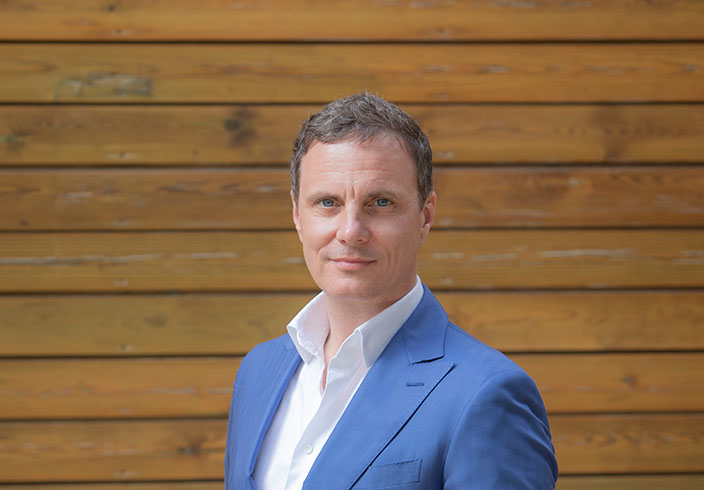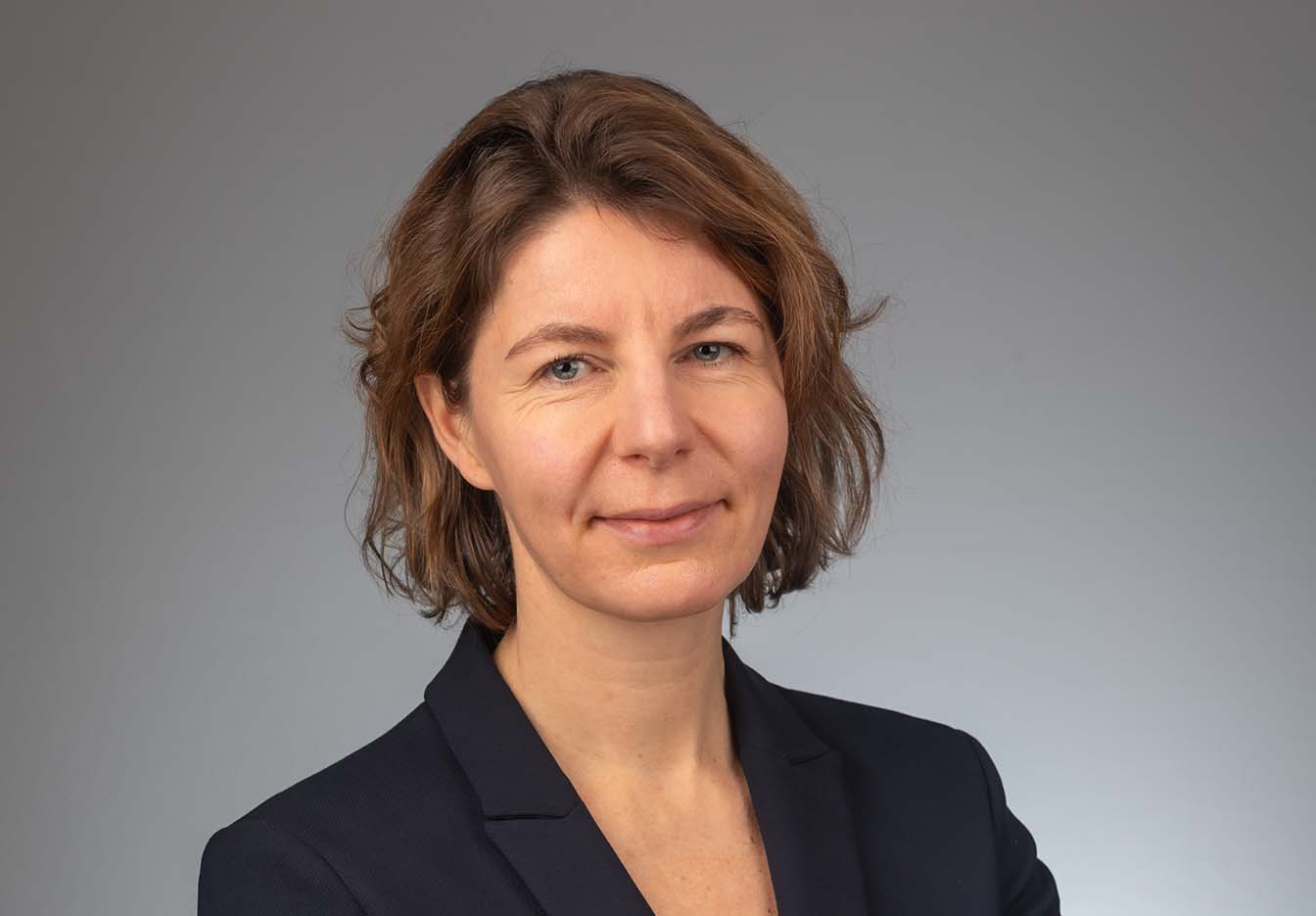Dear Dr Thiel, the decarbonization of the industrial sector is an important factor for the EU’s goal of climate neutrality by 2050. There is widespread agreement among researchers that decarbonizing the industrial heat supply is essential for this purpose. What contribution can ENERGYNEST’s ThermalBattery™ make in this context?
CT: Industry is responsible for a very high proportion of greenhouse gas emissions worldwide. However, attempts to decarbonize industry with solutions that address the entire problem have so far been overlooked. If we consider other sectors, such as the mobility sector, we can already see a much greater commitment and a greater use of resources. We need the same consistency and stringency for the decarbonisation of our industry – then, in my view, an incredible amount could be achieved.
ENERGYNEST stands for precisely this approach: our aim is to support industrial companies in reducing their emissions and achieving net zero. We do this by using state-of-the-art storage technology to power processes that currently rely on natural gas and other fossil fuels with green energy. This can be wind energy, but also solar energy – i.e. solar thermal energy or photovoltaics. With our thermal storage solution, we also increase efficiency levels through heat recovery systems. The storage system plays a crucial role in this context because it enables renewable energy to be utilised 24/7, regardless of
when it is generated.
It goes without saying that our solution is also designed to make this principle economically viable for our customers. In many industrial areas, particularly in the temperature range between 150 and 400 degrees, it offers significant advantages over hydrogen solutions, which are currently still very cost-intensive. After all, the green storage of process heat is highly interesting for all industries.
Speaking of electrification, scientists from the Potsdam Institute for Climate Impact Research (PIK) indicate that 78 percent of energy needs can be electrified with already established technologies. Further, 99 percent of electrification could be achieved by adding technologies currently under development. Electrification of heat is an important issue where Scandinavia in particular is far advanced. What can other countries learn from the Scandinavians?
CT: The open-mindedness of the Scandinavian countries towards new technologies is exemplary. Here in Germany, that is often not yet the case. We are generally sceptical and have a high demand for perfection. Scandinavia is much more agile in this context and takes a very close look at how new technologies can create value. It is no coincidence that our first and very successful project is based in Norway, south of Oslo. Structures are being created in Scandinavia to ensure that new technologies – which are not always economically viable from the outset – receive the necessary funding quickly.
Various providers of energy storage solutions are currently pushing onto the market. In your opinion, what is ENERGYNEST’s unique selling point?
CT: There are a number of things that make our approach unique. However, you always have to bear in mind that competitive advantages are always a snapshot in time. The situation can change quickly for the better or for the worse. That is why it is important that we always think ahead and remain ambitious to be the first and the best in the field of green heat storage technologies. What sets us apart is our technology, which is characterised by great simplicity and therefore low costs – despite an extensive supply chain in the background.
This year, we have three major projects that are already in operation or under construction. Our Yara project in Norway was launched in January and has now completed almost 4,000 storage cycles – that’s a huge amount. Our project with materials specialist Avery Dennison in Belgium recently went into operation. A third project is due to be launched at the beginning of next year together with the Italian energy group Eni. There is currently no other provider of thermal storage solutions that is active on the market with three major commercial projects. We are developing a huge project pipeline and are delighted that we are being recognised so strongly on the market.
We are also very well financed, which means that we are able to hand over fully financed, turnkey projects to our customers. This enables us to offer our customers attractive financing solutions. At ENERGYNEST, we invested in our own scaling early on and can act as a single contractual partner to our customers with a growing team – a major advantage over the competition.
Many companies state that although the advantages of high-temperature storage are well known, there are obstacles from a business point of view as to whether it really makes sense to convert the energy supply. How do you respond to this from an economic point of view?
CT: In this context, a number of considerations are useful and important. Firstly, there are the procurement costs of green electricity and the potential savings that can be made if natural gas or other fossil energy sources are no longer needed. Our solution is particularly lucrative for companies that have comparatively inexpensive access to green electricity – for example through their own photovoltaic system.
Specifically, the integration of our ThermalBattery™ currently pays off for customers in Germany from a gas price of 40 euros per MWh plus corresponding CO2 levies of around 20 to 30 euros per MWh. Added to this is the efficiency advantage of around 20 per cent compared to burning natural gas, for example, thanks to the electrification of processes made possible by our energy storage solution.
However, we unfortunately still see an economic imbalance, particularly in Germany, when you consider that green electricity is still taxed four times as much as natural gas and the CO2 levy price is not quite as high as it should be.
What we very much welcome is the growing number of subsidy instruments. Here, too, we are working very closely with our customers so that they can already operate economically with our solution in the initial phase. In my view, however, we still need much cleverer types of funding – other countries such as Scandinavia and the Netherlands are also a few steps ahead of us in this respect.
For what kind of companies is the battery solution suitable? In which industries do you see the greatest potential for the use of thermal energy storage?
CT: ThermalBattery™ is suitable per se for all industries from a certain system size. We often work with customers from the chemical industry, but also from the food industry, the agricultural industry and many other sectors. The temperature range in which production takes place is important. Together with the customer, we then develop a concept for how we can help to bridge energy volumes in order to decarbonize processes. The greater the energy requirement, the faster it can be scaled up and our storage systems can create value.
In our opinion, a thermal storage system is already profitable for companies with an annual natural gas consumption of around 10 GWh or more – the upper limit is of course open. This already corresponds to the consumption of a typical medium-sized company, for example a small food producer with around 100 employees and an approximate annual turnover of 50 to 100 million euros. In this context, it is also interesting to note that the legislator in Germany requires companies to have an energy-saving concept from an annual consumption of more than 5 GWh.
Can you say something about the scalability of the solution? How can ENERGYNEST support the implementation?
CT: If a customer expresses interest in our solution, a classic sales process begins. Following an enquiry, we quickly carry out a so-called “technical-economic fit”. This involves looking at the technical parameters and whether they match the customer’s needs and circumstances. We also determine whether we can create economic value for the customer with our solution. Sales and Engineering work very closely together in this area. I see this as a great strength, so that the customer quickly knows where they stand.
Once we have identified potential and value creation opportunities, we go deeper into engineering. The project then goes through what we call our project funnel, which is divided into different stages and processes. We now also have various international teams – our core markets are Germany, the Netherlands and Spain – which avoids language barriers, for example.
In your view, is the transition of our industrial heat supply being promoted enough, or is there something you would like to see from policymakers?
CT: Germany is definitely still in a deep sleep when it comes to promotion. It feels like there is often a lack of vision and creativity in this context – this is also reflected in the contradictory framework conditions. In my view, we need a real new start in order to literally get the wheels on the road. Then the topic of thermal energy storage is a huge opportunity to successfully decarbonize the critical 25 per cent.
Thank you very much for talking to us!
Are you interested in ENERGYNEST, or have any questions regarding our thermal energy storage solutions or our applications for your specific industry?
Don’t hesitate to drop us a line.



